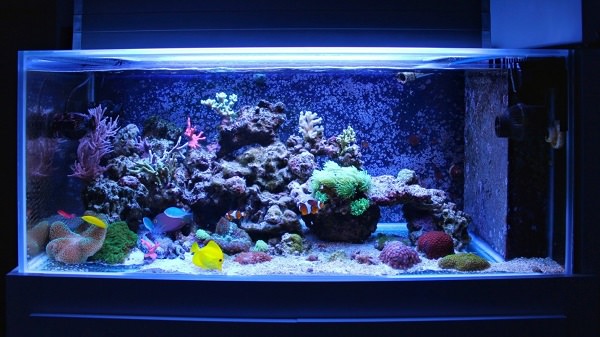Are you tired of constantly battling the stubborn and unappealing gunk that forms on your aquarium walls? Do you wish for a crystal-clear view of your treasured marine life without the haze of unwanted algal invaders? If so, you’ve come to the right place!
Aquarium wall gunk is a common problem faced by many aquarium owners. It can be unsightly and harmful to the health of your fish. As we desire a clean and healthy living space, so do our underwater companions.
Continue reading to help you defeat wall gunk once and for all.
Understanding the Causes
Before we dive into the solution, it’s essential to understand what causes aquarium wall gunk in the first place. The most common culprits are excess nutrients, such as nitrates and phosphates, in fish waste and decaying plant matter.
Another factor is inadequate water flow, allowing debris to build up on the walls. Overfeeding your fish can also contribute to the growth of gunk as uneaten food particles sink and settle on the walls.
Removal Tips and Tricks
Now that we know what causes it, let’s focus on how to remove wall gunk. The key is to maintain a clean and balanced environment for your fish. Here are some steps you can take:
Regularly Clean Your Aquarium Filter
The filter is responsible for removing debris and maintaining water quality. Regularly cleaning it will ensure that your water is free from excess nutrients, preventing the growth of gunk.
Use Algae Scraper Tools
Algae scrapers are handy for removing the gunk already forming on the walls. Scrape it off with the tool and then perform a water change to remove any remaining debris.
Introduce Algae-Eating Fish or Snails
Certain fish species, such as plecos and algae eaters, can help keep your aquarium walls clean by consuming algae and other debris. Snails are also an excellent option for keeping your walls free from gunk. Just be sure to research the specific needs of each species before adding them to your tank.
Prevention Guide
As they say, prevention is better than cure. Here are some tips for preventing wall gunk in your aquarium from forming in the first place:
Don’t Overfeed Your Fish
Only feed your fish what they can consume in a few minutes and remove any excess food. This will also help maintain good water quality.

Perform Regular Water Changes
Regular water changes are crucial for maintaining a healthy balance in your aquarium. This will help remove excess nutrients and debris that contribute to the growth of gunk.
Keep Up with Tank Maintenance
It’s essential to regularly clean and maintain your tank, including removing any decaying plant matter and vacuuming the substrate. This will prevent the buildup of excess nutrients and debris.
If you have a mandarin dragonet in your aquarium, check this mandarin goby care guide. This will help you ensure that they thrive in your aquarium.
Overthrowing Aquarium Wall Gunk
With these tips, you can effectively remove and prevent aquarium wall gunk. This will ensure aquarium cleanliness and a healthy environment for your fish.
Understanding the causes and taking proactive measures can keep your tank looking beautiful and your fish happy. So don’t let aquarium wall gunk get the best of you – take action today!




